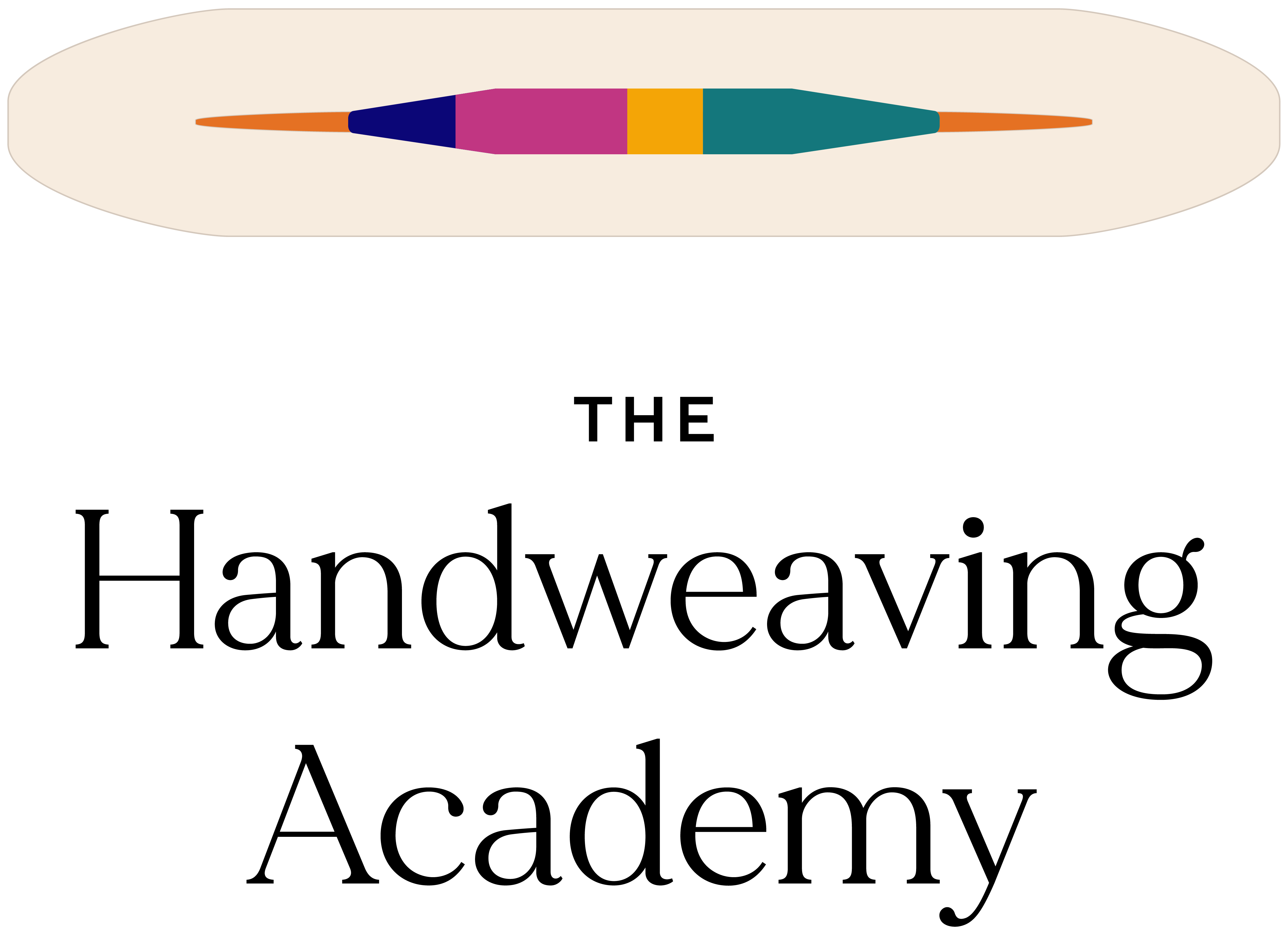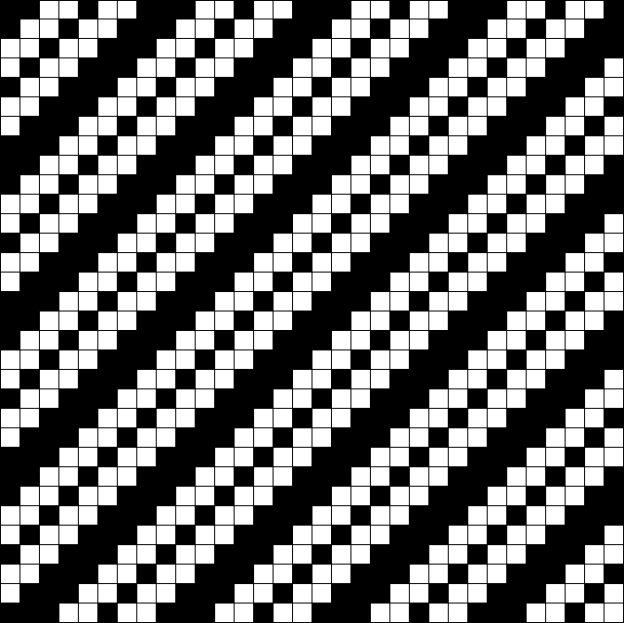Twill is the most common structure apart from plain weave. It has unlimited variations: straight twills, broken twills, point twills, dorniks, rosepaths, M&Ws, advancing twills, undulating twills, plaited twills… the list goes on and on.
Twill can be simple or very complex, making it accessible to weavers with any kind of loom. Fancy and decorative twills may require lots of shafts but one of the most common – perhaps THE most common – takes only three: the denim fabric that many jeans are made of is a three shaft twill.
We’ll be looking at the structure and drafts of many, many different twills on three, four, eight, and more shafts over several Twill courses, but before we focus on individual twills, let’s answer a different question first:
What do all these twills have in common, and what sets twill apart from other structures?
In this course you’ll learn
- The properties of the twill structure
- A technical description of twills
- How to classify twills in different ways
- What twill ratios are
- How to pick the right sett for a twill, just from its ratio
Suggested reading: This course assumes you’ve completed Drawdowns Part 1: Structural Drawdowns and Ashenhurst’s Formula to Determine Sett or are familiar with the subject matter they cover.



